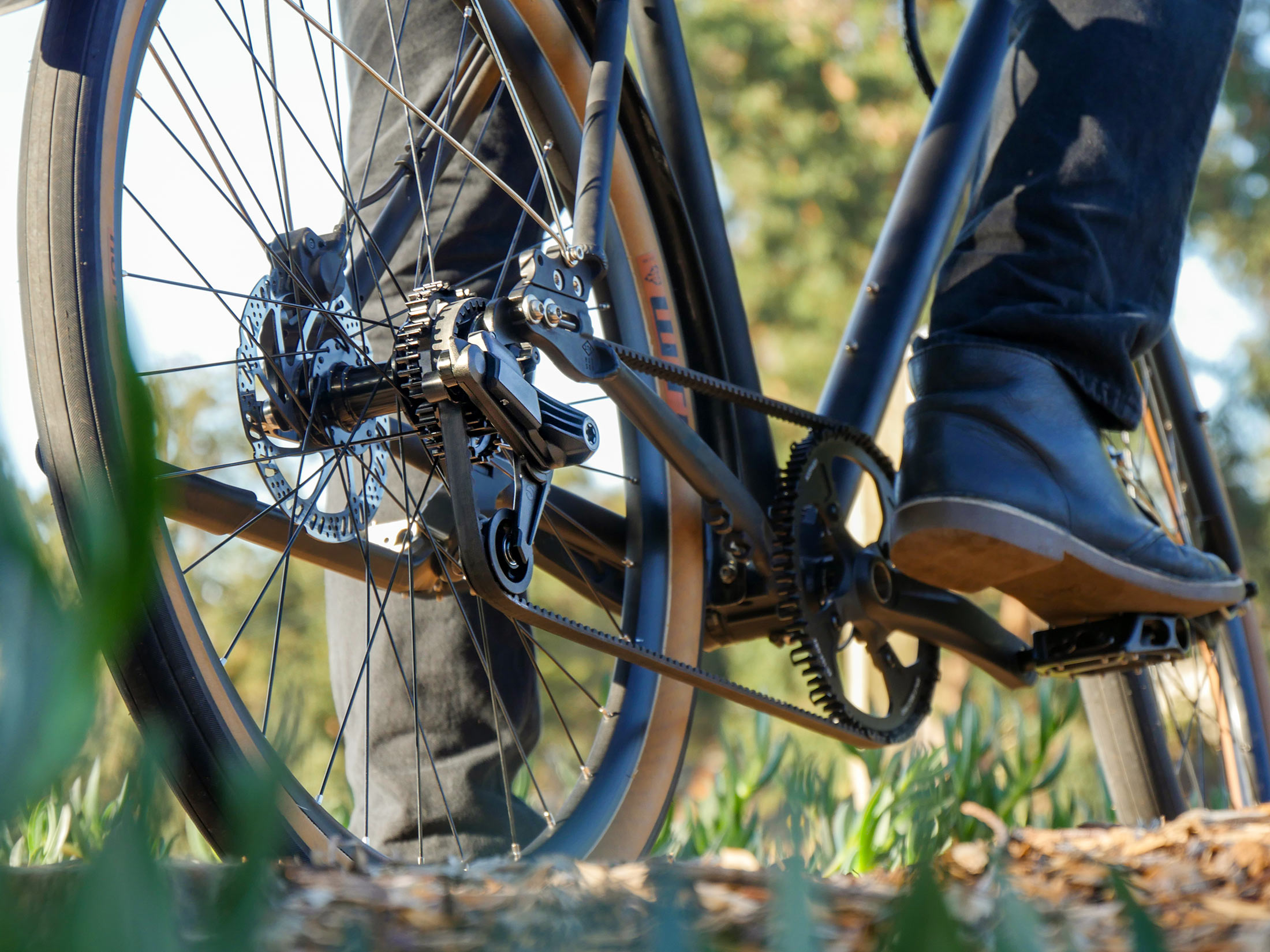Belt drives are quiet, clean, and simple, but rely on internally geared hubs or transmission boxes to add more speeds to a bike. Now, Veer is working on a unique two-speed cassette that uses rotating tooth sections to change the ratio without changing the belt’s alignment.
Veer makes belt drives to compete with Gates, etc. Called Veer Shift, they’re looking to take it a step further by giving folks a chance to invest (on StartEngine) and bring this multi-speed design to market.
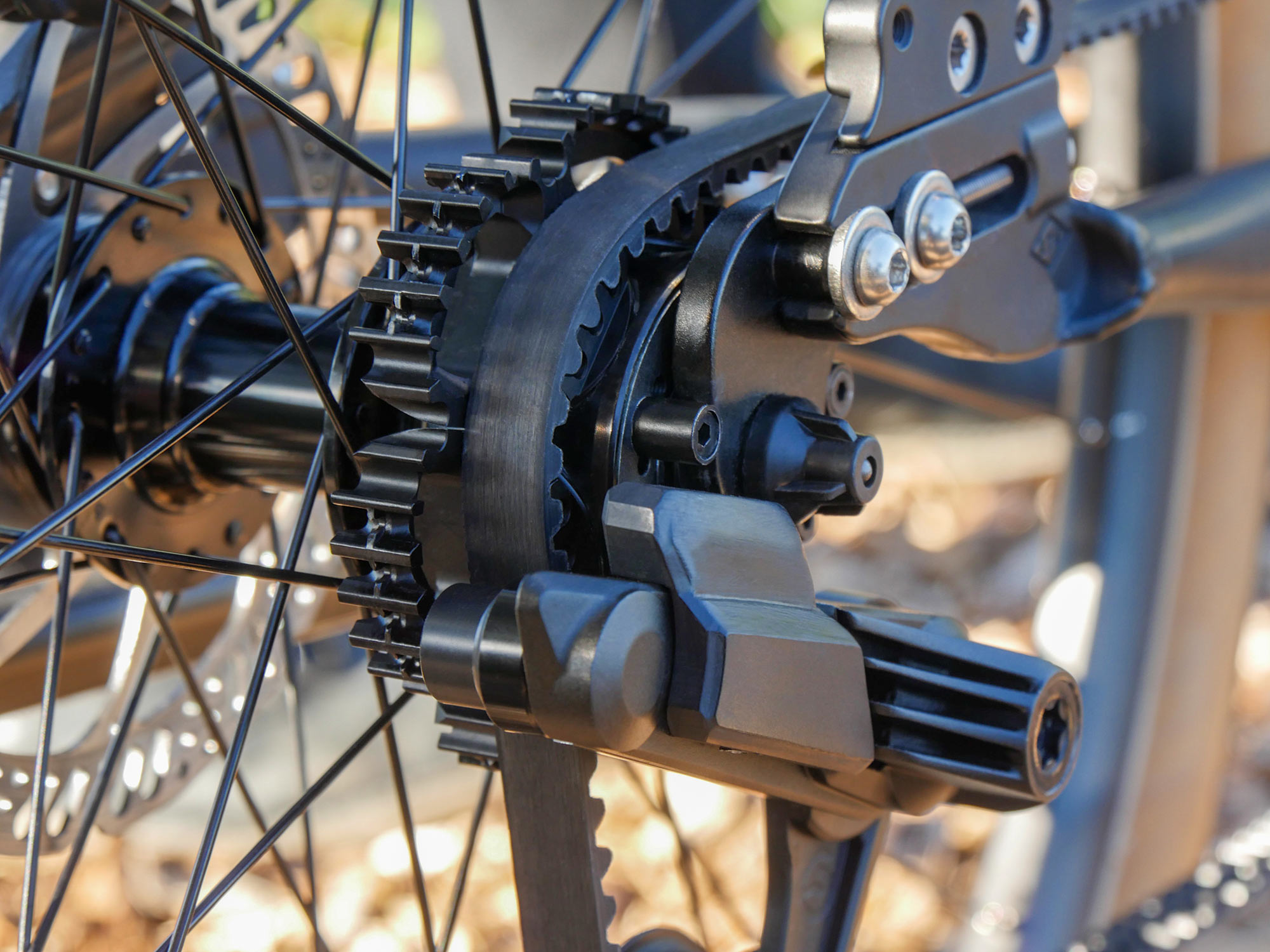
It works by placing six rotating segments on a freewheel. Each segment has two gear ratios, one with four teeth and one with seven, though it looks like not all teeth are engaged so it’s really about changing the effective diameter.
A tensioner (that looks like a derailleur) is there to allow the required belt length while taking up the slack. Here’s a video showing it in action:
Basically, the segments rotate as the belt comes off of them. By the time they roll around to the bottom to make contact with the belt again, they’ve switched sides and changed the effective diameter. Nothing moves under the belt, and the belt doesn’t move left or right. The functionality is quite ingenious, but…
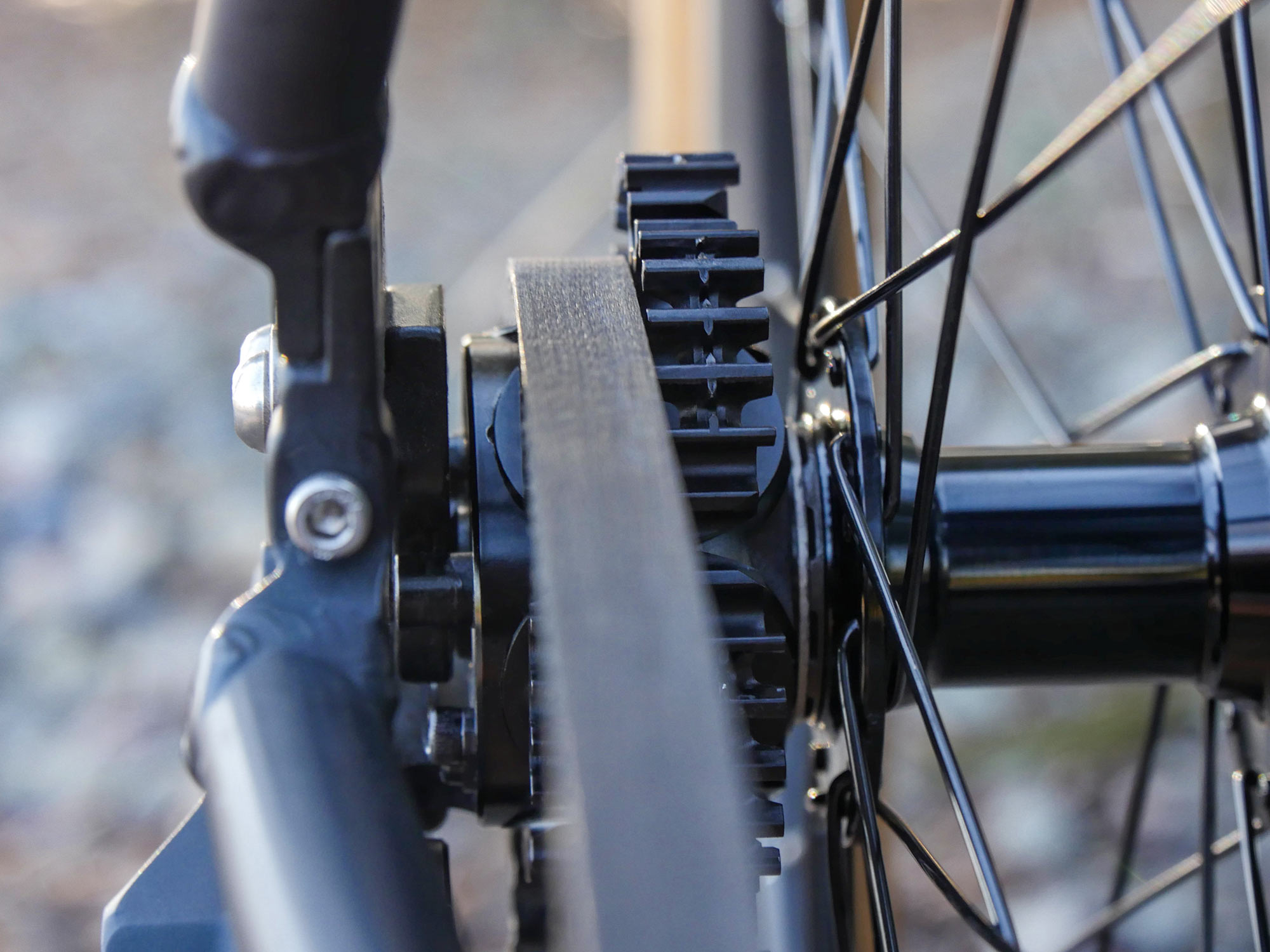
Veer says it’s far more efficient than gear boxes and cleaner/quieter than chains and cassettes and derailleurs. But it does beg the question, why not just use an internally geared rear hub and gain up to 14 speeds with no external moving parts?
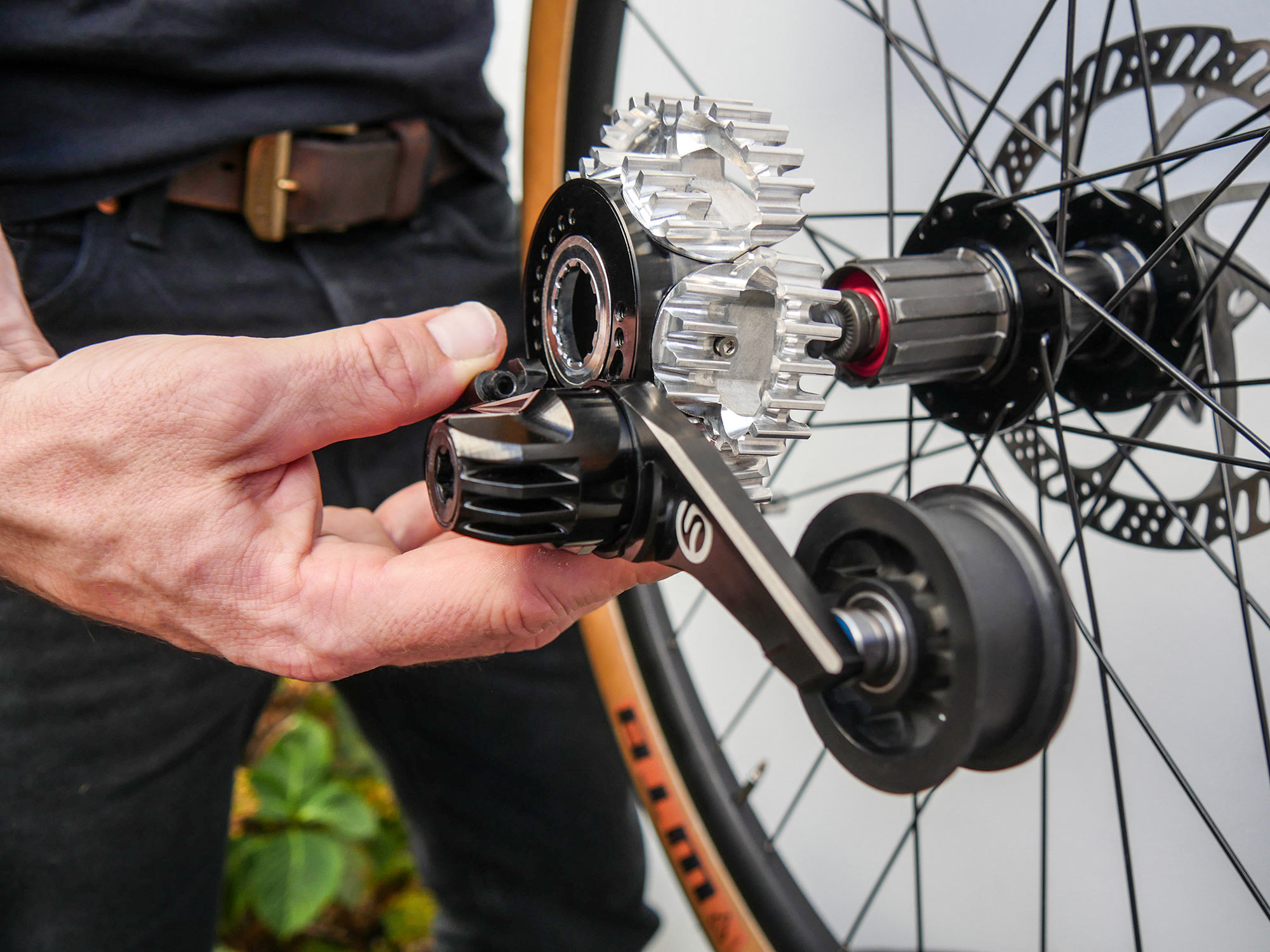
One reason: e-bikes with hub motors. Veer is already an OEM supplier to Detroit Bikes and Lyric Cycles that use their belts on hub-driven e-bikes. This would be an easy retrofit since the Shift system fits on a standard HG freehub body. So for e-bikes with hub motors, it’s a way of adding more range without having to further modify the frame. (Side note: Belt drives still require that the chainstay or seatstay can be split to insert the belt…unless you use Veer’s Split Drive system)
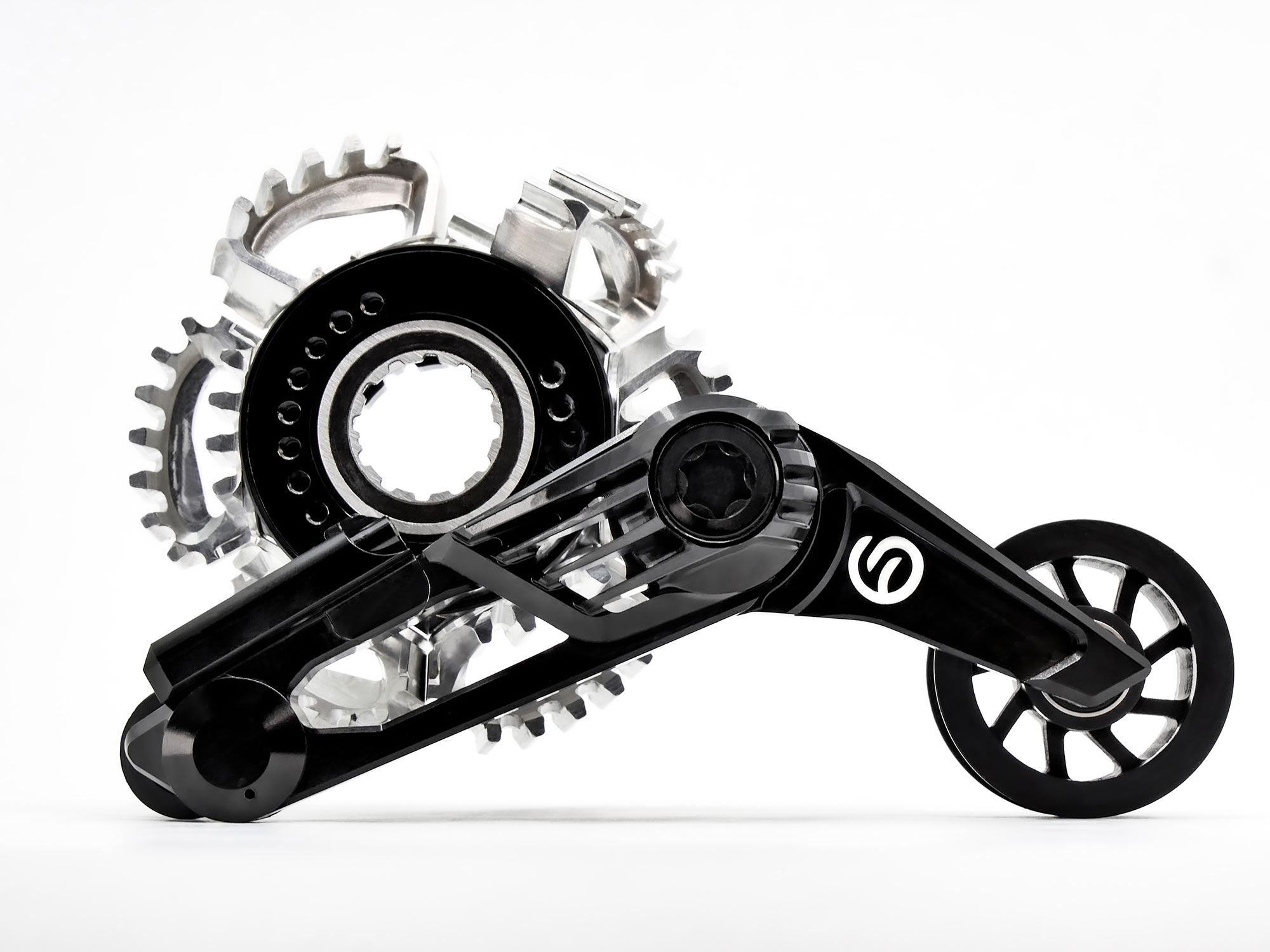
The system is controlled via wireless shifter, so it would need to be charged. The final gear ratios would be easily determined by the front chainring. Veer says it could be used on other electric vehicles, from motos to scooters, too.
